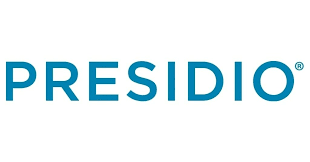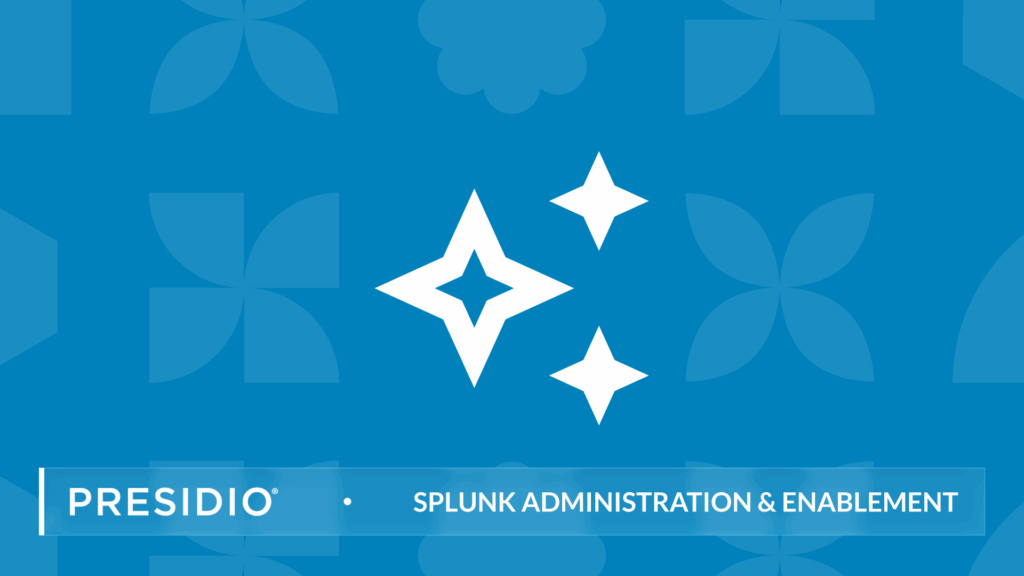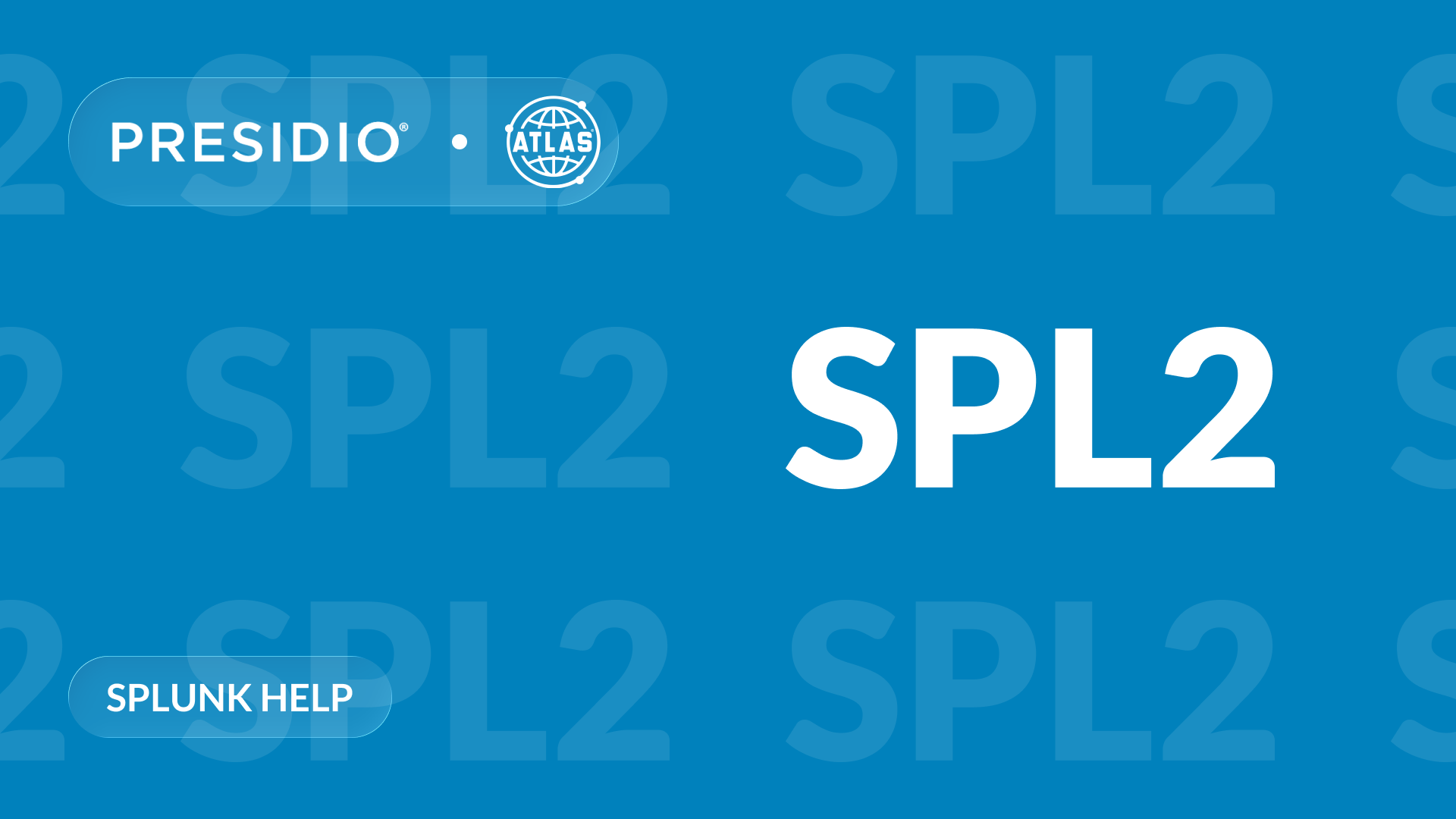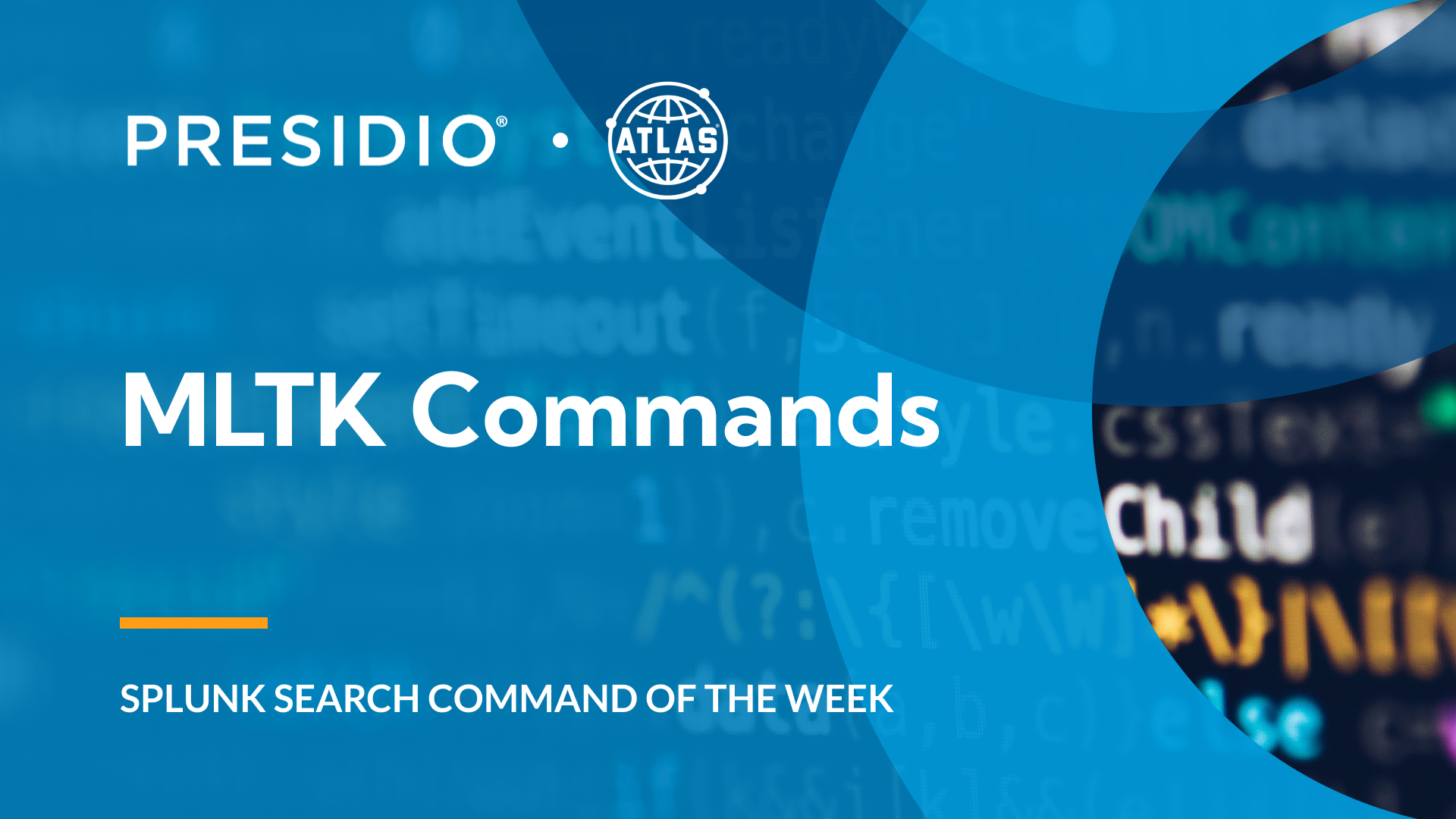Splunk Admins Deserve Better Than Manual Maintenance
Every Splunk admin knows the grind: repetitive data onboarding, constant alert tuning, cluttered dashboards, and limited time to fix it all. These inefficiencies pile up. The result is wasted hours, inconsistent configurations, and burnout across the team.
What starts as a powerful platform can become a heavy maintenance load if left unchecked.
This post looks at how teams can reclaim their time, reduce manual Splunk tasks, and implement reliable automation using Atlas, without sacrificing compliance or control.
How Can I Automate Repetitive Splunk Admin Tasks Like Adding Data Sources or Managing Alerts?
Data onboarding usually requires coordinating across teams, editing props.conf, and repeatedly applying the same SPL and field extractions. Alerting is no better. Admins are forced to recreate schedules, conditions, and ownership each time a new alert is needed. It adds up quickly.
Common friction points:
- Time-consuming manual setup for each new data source
- Alert rules created without clear ownership or tuning
- Repetitive workflows that burn time and introduce risk
While Splunk is a powerhouse of capability, it is a platform like every other, and platforms need processes to maintain. Splunk Teams should have clear responsibilities on if they are expected to monitor for data outages for the users. Specialization of duties across the Splunk team for onboarding data and managing Knowledge Objects could help increase execution speed for your users as well. It’s recommended to tie your Splunk platform to your ticketing system so Users and Stakeholders and request changes to Splunk through clear channels instead of relying on emails or chats.
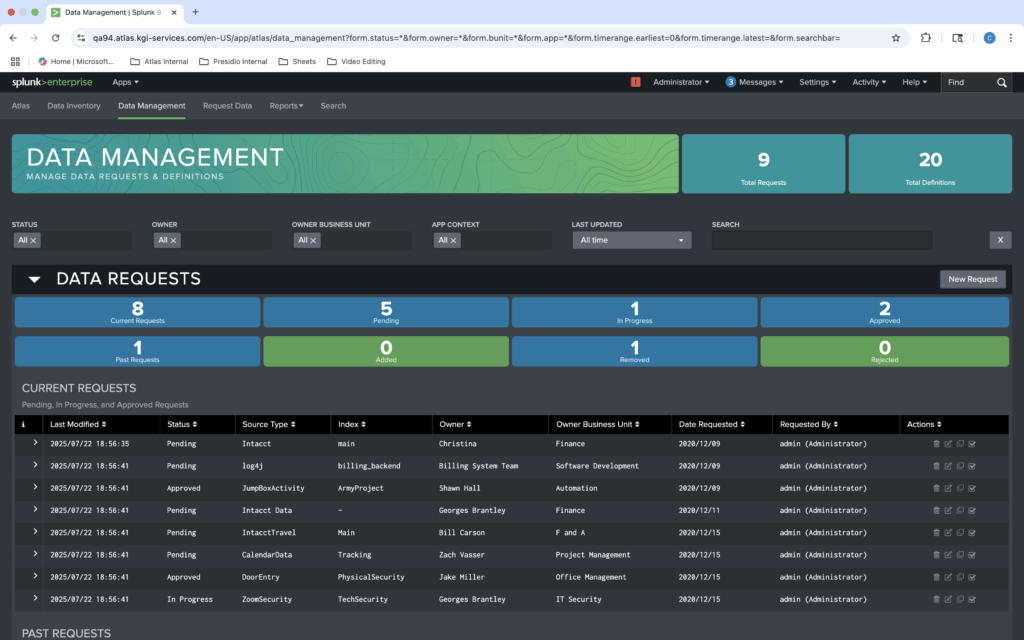
Atlas in Action: Atlas simplifies data onboarding by centralizing definitions and automating the creation of data records through the Data Management workspace. Admins can assign owners, define search relevance, and track source usage in one place. For alerting, the Scheduling Assistant provides full visibility into existing scheduled searches and lets admins manage frequency, overlap, and ownership with just a few clicks. These tools replace hours of manual effort with structured, repeatable workflows.
What are Best Practices for Streamlining Splunk Dashboards & Reducing Noise in Alerts?
Dashboards often grow without governance, leading to slow load times and unclear results. Alerts, meanwhile, become a flood of irrelevant noise—many of them outdated or poorly tuned. Admins know this is a problem but rarely have time to clean things up.
Streamlining means:
- Reducing duplicate or underused dashboards
- De-duplicating alerts that trigger on the same conditions
- Tuning schedules and search windows to avoid overlap
Admins should frequently search for ‘Clone’ Splunk dashboards and alerts. These are typically created by users and can lead to slowdowns as users create copies of searches that continue to execute. Admins should also investigate search bottlenecks using the Monitoring Console. These bottlenecks can lead to higher CPU utilization or failed searches, causing platform degradation.
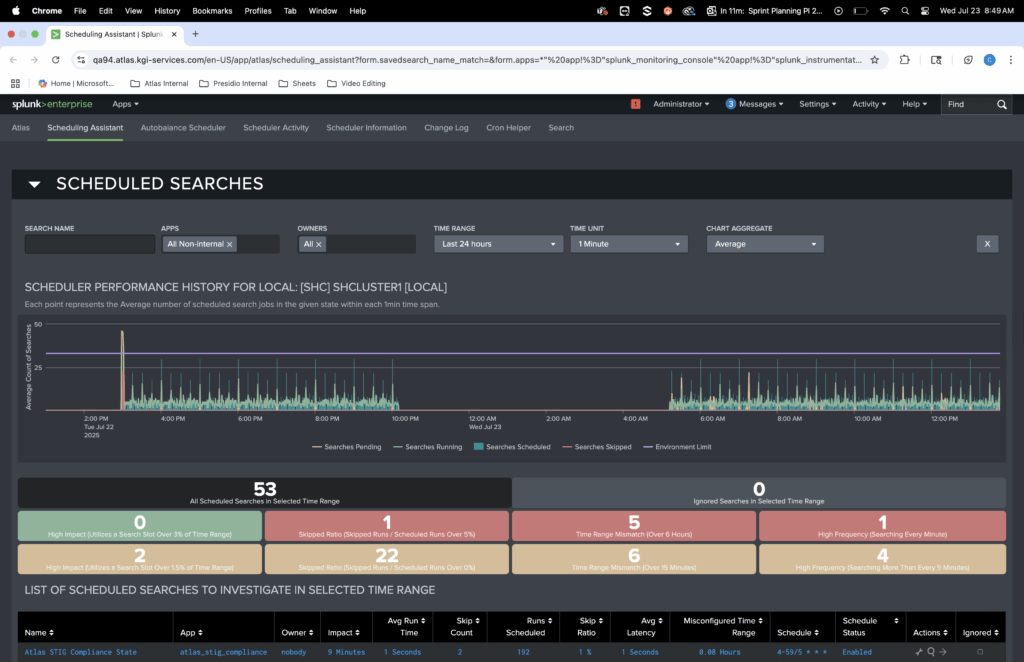
Atlas in Action: Atlas gives admins a clear view into dashboard and alert usage with tools like Scheduling Assistant. Scheduling Assistant has built in automation to assist with finding and fixing bad searches, freeing up CPU resources and ensuring your environment stays healthy.
Are there Tools That Can Reduce Manual Work for Splunk Admins Without Breaking Compliance?
Many admins turn to scripts or free tools to ease their workload. These quick fixes often lack support, introduce risk, or break during upgrades. Worse, they can violate internal compliance and security standards
What teams need instead:
- Supported tooling that aligns with enterprise controls
- Secure configuration changes tracked in audit logs
- Automation that does not require editing config files directly
Splunk offers scripted actions and alert integrations to empower IT and Security teams to leverage it as their central platform. Alerts are scheduled and can trigger based on log data coming into Splunk, then can send an email or create a ticket in ServiceNow (among other options!). These alerts can also trigger scripts that run remediation actions. Further remediation actions come built into the Splunk product SOAR if your security team is looking for maturity in this area.
Atlas in Action: Every Atlas subscription comes with Expertise on Demand. Expertise on Demand is fractional admin support that can help you set up Splunk integrations and automated workflows to not only save time with the produced automation, but save time with the creation of the automation itself!
Start Automating the Admin Work That's Slowing You Down
Splunk should be powerful, not painful. With Atlas, your team can automate routine admin tasks, reduce noise, and maintain high performance without endless maintenance. The result is more time for strategic work and less time spent on repetitive cleanup.

